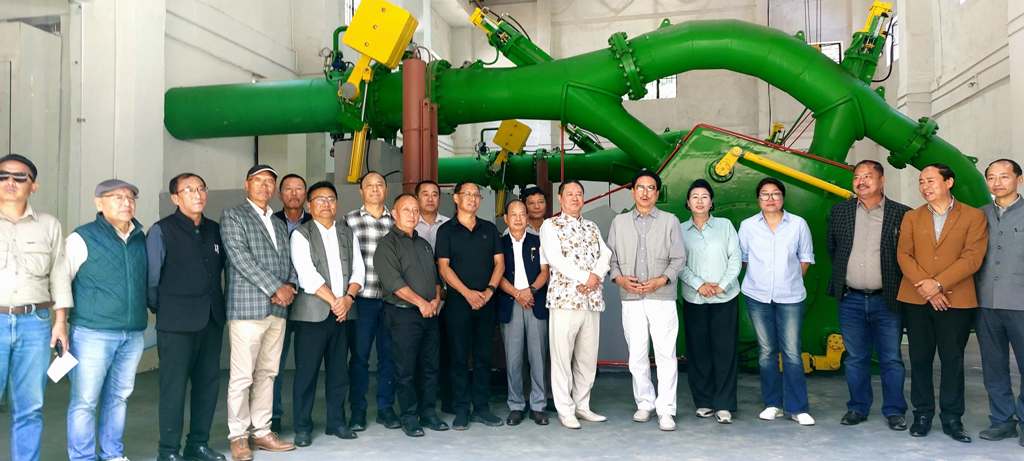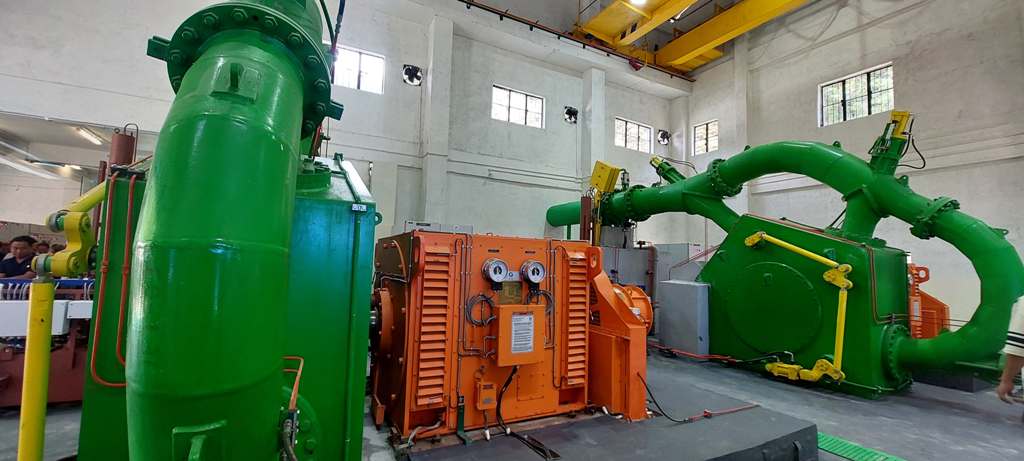SUNDAY, DECEMBER 07, 2025
- Home
- Nagaland commissions 2.4 MW Duilumroi Hydro Project
Nagaland commissions 2.4 MW Duilumroi Hydro Project
KG Kenye emphasised the need to harness the energy resources available in the state to meet growing demand.
Share

Minister KG Kenye with legislators and Power Department officials at the Duilumroi Power House, Poilwa Village, on Friday. (EM Images)
- POILWA — Minister for Power and Parliamentary Affairs, KG Kenye, on Friday emphasised the need to harness the energy resources available in the state to meet growing demand.
- He stated this during the inaugural of the 2.4 MW Duilumroi Hydro Electric Project at Poilwa village in Peren district.
- Expressing satisfaction with the successful completion of the project, Kenye praised the department and contractors for completing the work in just over two years despite the region's challenging terrain and logistical difficulties. He pointed out that the state has only developed 26 MW of hydroelectric capacity in over six decades of statehood, falling short of serving its growing population’s energy needs.
- While large hydro prospects are limited, Nagaland holds great potential for small and mini hydro projects, Kenye said and urged engineers to identify and develop such viable locations.
Also read: Nagaland seeks to boost sustainable oil palm cultivation
- He also acknowledged the state government under Chief Minister Neiphiu Rio for funding the project solely through state resources, despite being cash-strapped.
- Secretary of Power, Asangla Imti, echoed Kenye’s sentiments and congratulated the department’s engineers—past and present—for their dedication. Stressing sustainability, she called for increased forest cover around the catchment area to protect the project’s long-term viability.
- “Let this be a model hydro project for the department,” she said, urging officials to ensure efficient operations and use lessons from past experiences when selecting future hydro sites.
- Chief Engineer (Transmission & Generation), Kasho Chishi, provided operational details of the project: construction began in April 2021 with a targeted 36-month timeline, but geological challenges caused minor delays. Nevertheless, the project was technically commissioned on December 11, 2024, and entered trial operation in early 2025.
- The total project cost amounted to INR 40.29 crore, with major expenditures allocated to civil works (INR 21.25 crore), electro-mechanical components (INR 14.42 crore), and transmission infrastructure (INR 3.99 crore). Despite slight cost escalations due to revised GST rates and unexpected works, Chishi maintained that the cost of generation remains competitive at INR 5.50 per unit.
- With a generation capacity of 2.4 megawatts, the project is connected to the state grid through a dedicated 33 kV line. “It can supply electricity to roughly one-tenth of Kohima city during peak hours,” Chishi explained.
- He also stressed the project’s economic significance. “This project doesn’t just provide services—it generates revenue. Designed for 40 years, its returns will more than justify the investment.”
- He thanked the Planning and Finance Departments for uninterrupted funding and extended appreciation to the Poilwa Village Council and nearby villages for their cooperation.
- Additional Chief Engineer (Civil), Visakho Therie, presented the project’s technical specifications. Developed as a "Run-of-the-River" scheme, the Duilumroi project taps the river originating from the Japfu ranges.
- With a net head (vertical drop) of 165 metres and a design discharge of 1.72 cubic metres per second, the plant can generate around 11.95 million units (MU) annually at 60% plant load factor (PLF).
- The infrastructure includes a 16-metre diversion weir, 500-metre power channel, penstock, and a powerhouse equipped with two Pelton turbines. A 33/11 kV substation ensures grid connectivity via a 33 kV transmission line to the Kohima substation through Zubza.

Machinery and infrastructure setup at the Duilumroi Hydro Electric Project, Poilwa Village, captured during the inaugural event on Friday. (EM Images)
- Therie highlighted that the development incurred no additional land acquisition costs, as the land was already owned by the department. He also noted that the project generated 367,800 units during the trial period, saving the government over INR 20 lakh in power purchases.
- Based on the estimated annual generation of 11.95 MU at 60% PLF, the unit cost of power generation is calculated at INR 5.51 per unit, which is expected to save the State Exchequer approximately INR 6.5 crore annually from avoided power purchases under ideal conditions. The capital cost recovery is projected to be achieved within seven to eight years of the project's commissioning.

